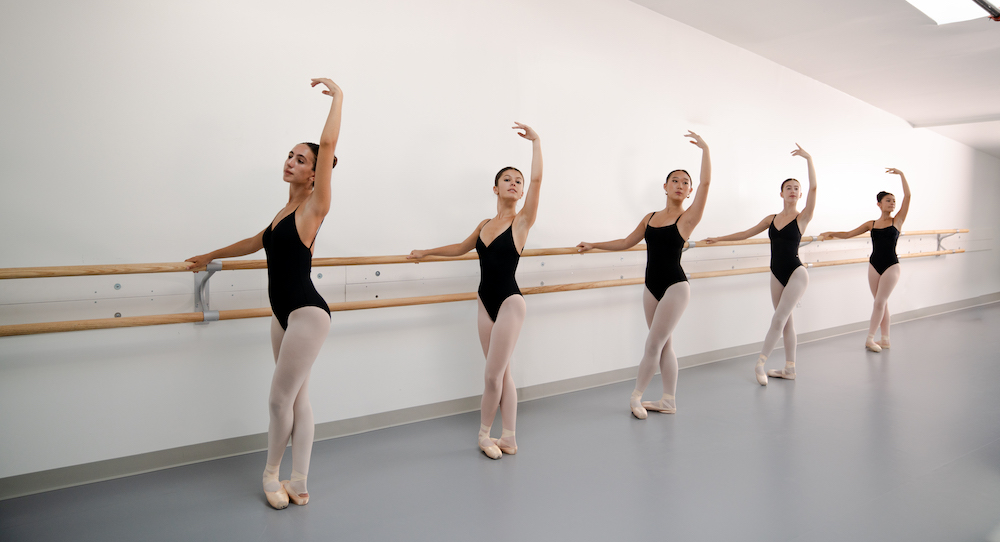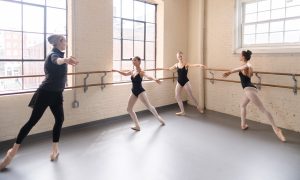Ballet class begins at the barre. It is the important place where dancers work on their balance, alignment and strength. It is crucial, then, that your studio’s ballet barres be of high quality, to ensure your students are getting the necessary support they need to develop proper technique.
Stagestep, a company known for its flooring – both in studio and at home – now offers ballet barres. The options include single or double wall-mounted set-ups, and they can be fit into and enhance any professional studio or home practice space.
The new Stagestep Ballet Barre System features 6-foot natural ash wood barres, which are sealed with oil and give a natural look and are beautiful to the touch. These wall-mounted barres can be used in either single or double wall-mounted set-ups.
Ballet barres can be installed at any height, depending on the ages of the students. Stagestep can help you decide the best height for your studio’s needs – for example, approximately 40-42 inches for adults and 30-32 inches for younger students.
Each 6-foot barre is supported by steel brackets at both ends, with contiguous barres sharing a bracket. Due to varying wall types and installation requirements, hardware is not included and should be locally sourced by an experienced installer. This secure installation will ensure that the ballet barres can safely support warm-up exercises and stretching.
“The Stagestep ballet barre brackets are classic in design and robust to handle varying weights,” explains Bill Goldberg, Stagestep Technical Services Director. “Technically, there is very little downward pressure applied to the barre. There is just a touch. However, in the real world, the barre is used for warm-up and stretching, and probably just hanging onto.”
Installation varies depending on the construction of the studio’s walls. “Typically, the studio will have a wall or walls in mind in their studio,” Goldberg says. “Typically, not adjacent to the mirrors, as it will complicate installation. However, everything is possible. Ballet barres can be floor mounted next to a mirror or a floor to ceiling window. In the end, it is a personal decision, or in the case of a studio, the director or owner’s decision.”
Regardless of where in the studio the barres are installed, Goldberg stresses the importance of making sure they are secure for the worst-case scenario. “Stagestep gives recommendations for attaching to block walls and wall boards on studs, as well as floor mounting,” he shares.
Stagestep recently outfitted Philadelphia Dance Academy with its new barre system. “Our new Stagestep barres are a perfect fit for our new studio – strong, beautifully crafted and a great value,” says Lori Lahnemann, owner of Philadelphia Dance Academy.
“Friends ask me what makes a floor a dance floor,” Goldberg concludes. “I say a dance floor has force reduction or energy absorption, resilience or bounce but not as much as a diving board, a coefficient of friction which makes the floor not too slippery and not too grippy (what Goldilocks likes, something that is just right), a surface which will not indent, and surface area which give lateral support – so no sprained ankles. Simple. Right? And what makes a studio a dance studio? A dance floor, mirrors and ballet barres. Now, that’s exciting!”
For more information on Stagestep’s new Wall-Mounted Ballet Barre System, visit stagestep.com/product/wall-mounted-ballet-barre.
By Laura Di Orio of Dance Informa.
Sponsored content.















